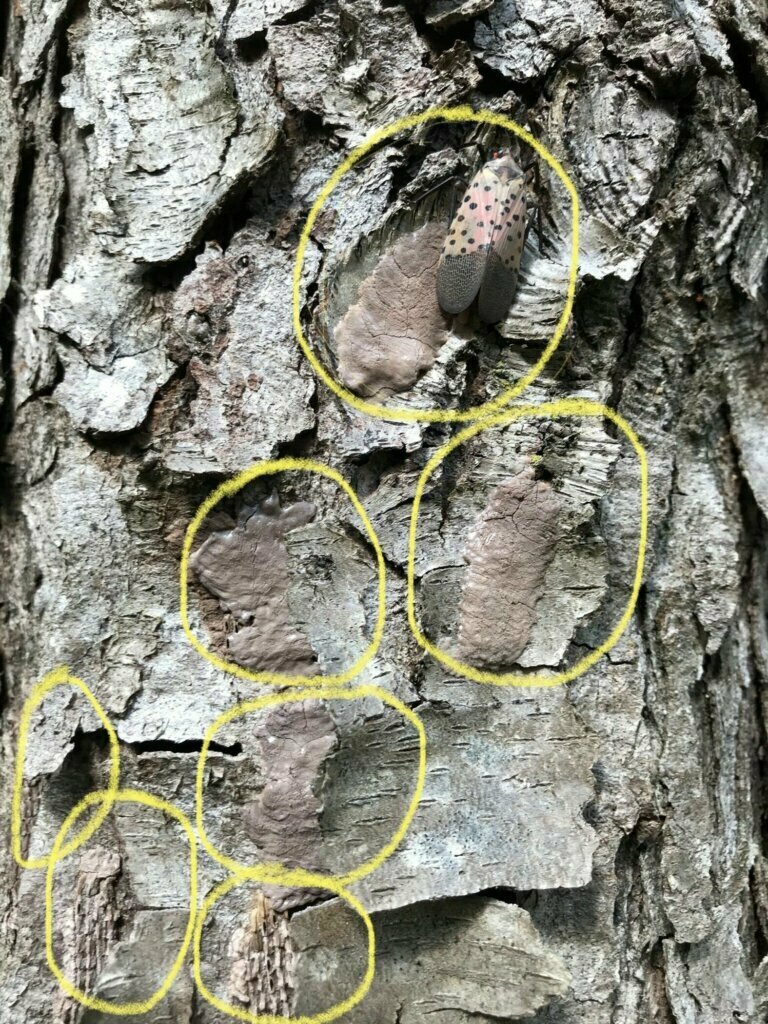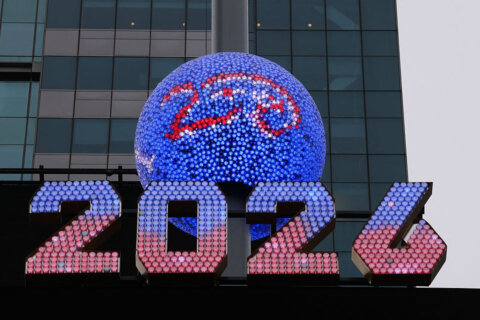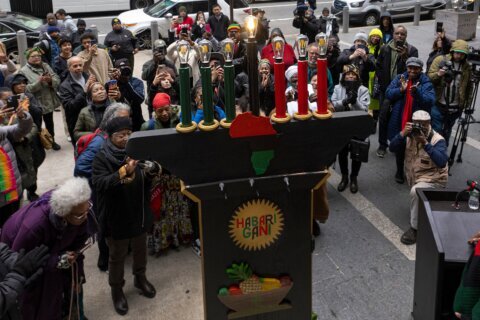This “lantern” won’t light up your life.
As you decorate this holiday season, horticulturists are asking D.C.-area residents to look out for invasive insect eggs that live in Christmas trees, wreaths and garland.
The spotted lanternfly — which oozes black, sooty mold and causes serious tree damage — often lays eggs on tree trunks and branches just before winter temperatures set in.
The egg masses include dozens of jelly bean-shaped pods covered in a waxy protective layer.
Loudon County, Virginia, horticulturist Beth Sastre urged local residents to search their holiday greenery for the eggs.
“We would like anyone who finds spotted lanternfly egg masses to take a photo and send the photo to us through our online form,” Sastre said in a statement issued by the Loudoun County government. “Then, destroy the eggs by scraping the eggs into a baggy with alcohol.”

And although the word “destroy” may not seem in step with the holiday spirit, horticulturists are saying otherwise.
The spotted lanternfly was first discovered in Berks County, Pennsylvania, in 2014 and has since infested the surrounding counties — damaging local tree populations, decreasing crop yield and covering decks in sooty mold.
The mold is not dangerous to humans, but is harmful to native plants. The flies die at the beginning of winter, but the egg masses can survive temperatures below zero.
The insect comes from eastern Asia and has cost the Pennsylvania economy at least $324 million a year, according to Pennsylvania State University.
The spotted lanternfly has infested only three Maryland counties and two Virginia counties so far, but local horticulturists do not want that number to grow.
Sastre encouraged residents to buy their live holiday decorations in Loudon County, which has not been infested with the bug.
But if you buy your holiday greenery from Frederick or Clarke counties in Virginia, or any of the surrounding states, be sure to look out for spotted lanternfly eggs, she said.








